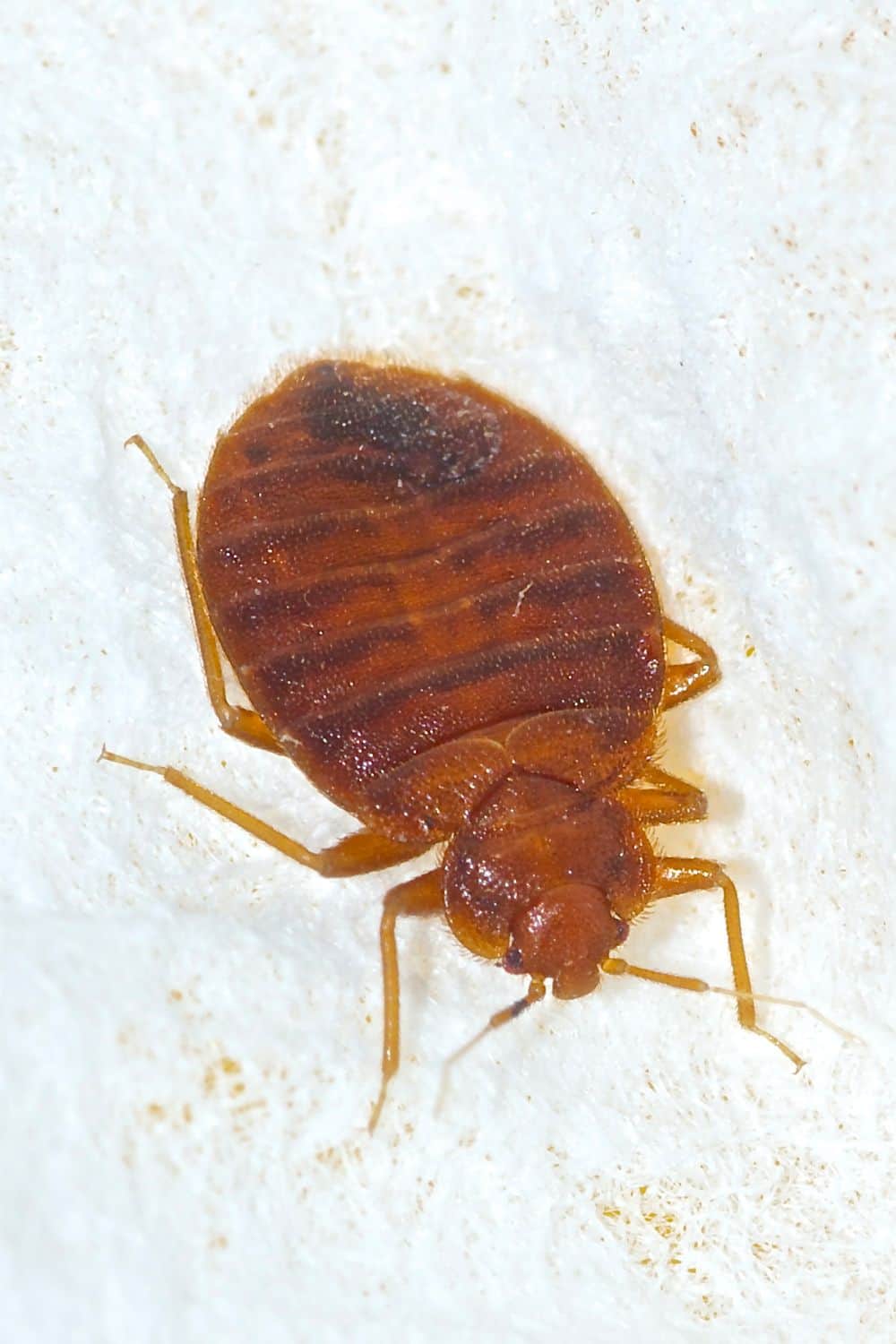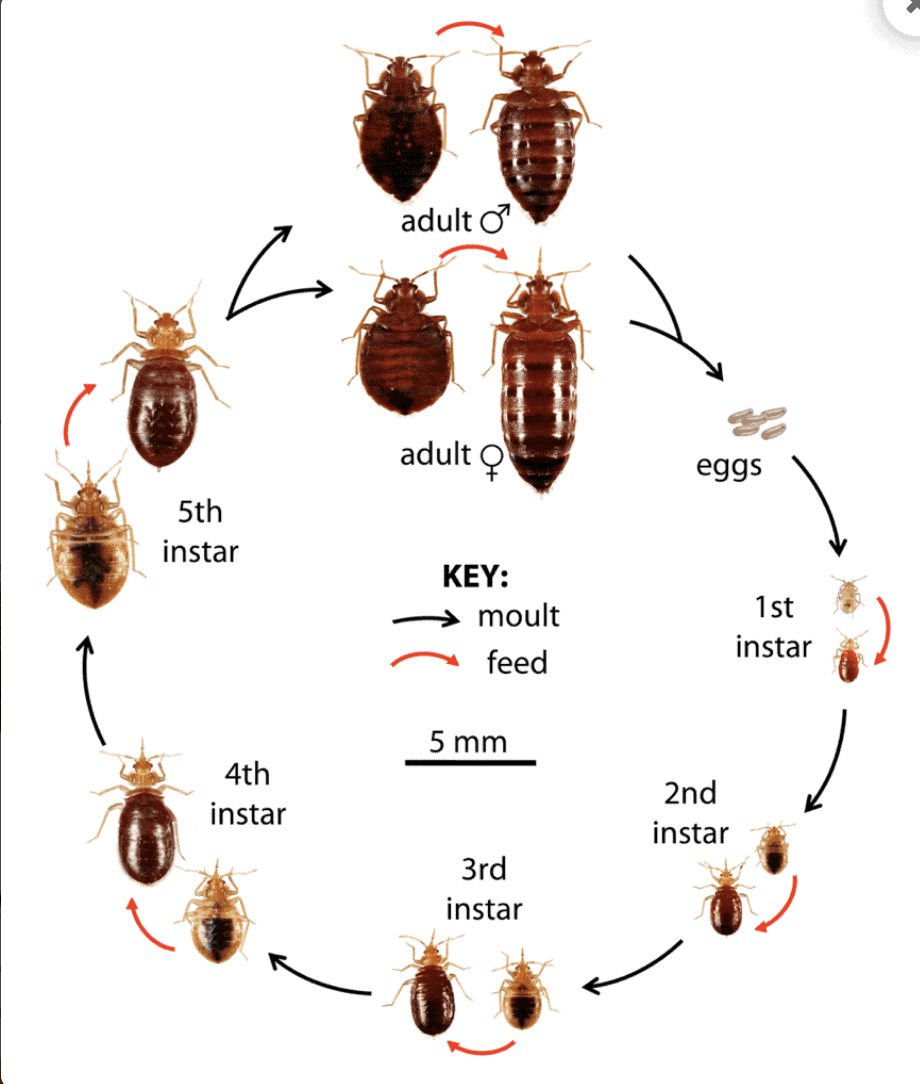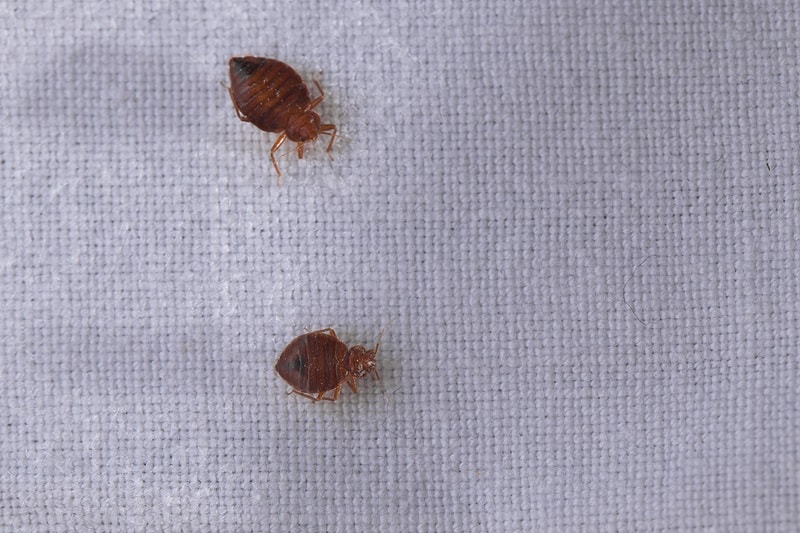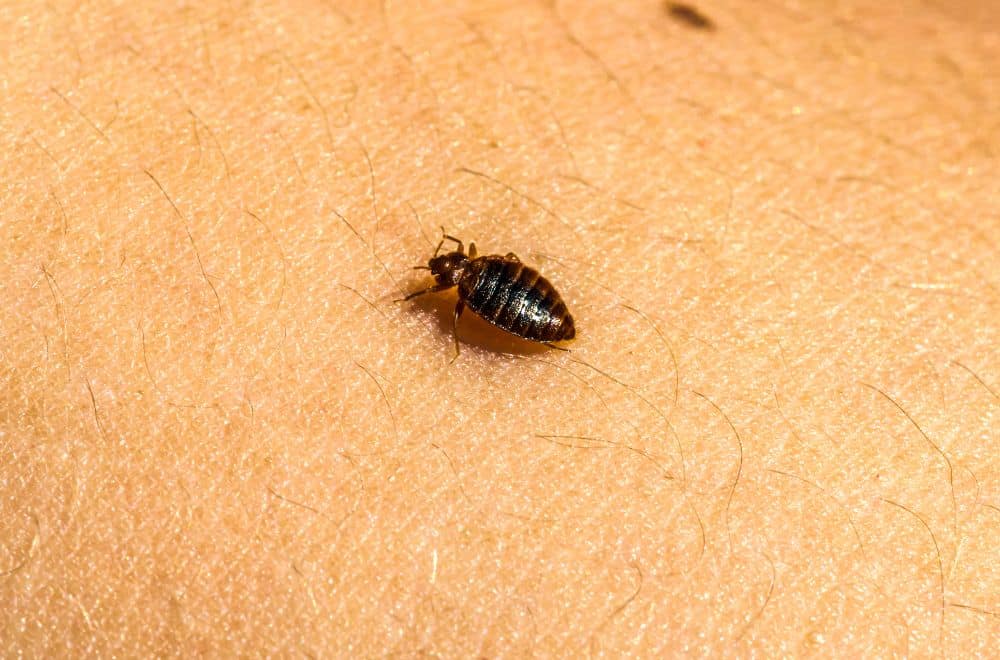Bed bugs are the bane of human existence because they’re so hard to get rid of. They’re tiny vampire bugs that need a blood meal every few days and multiply at alarming rates. But do baby bed bugs bite? Yes, they do. These insects need blood at every stage of their lives, so every member of their little bug family is an annoyance. Let’s find out more about bed bugs.
What is a Baby Bed Bug?

This may seem like a silly question, but it’s quite relevant because insects have various life stages, namely egg, larva, pupa, and adult. In most insects, the larva needs food but the pupa doesn’t since it lives in a cocoon and emerges as an adult. So it’s crucial to understand what bed bug stage counts as a baby before you can confirm whether the baby bed bugs bite.
Technically speaking, a baby bed bug is called a nymph, and bed bugs go through five phases of nymphs before adulthood. Nymphs need a blood meal before they molt to the next stage, so a baby bed bug requires five bloody dishes to mature into a grown-up. If these bed bug babies have consistent hosts, each nymph takes a week before it molts into the next stage.
Nymph stages are called instars, and baby bed bugs look exactly like their adult forms, only lighter. They have a tiny head, a flat oval body with visible stripe-like segments, six legs, and two antennae. Adults are a dark brown shade but baby bed bugs are pale, with tan, off-white, or yellow complexions. They start as eggs, experience the 5 instar stages, then become adults.
This means the nymph is the bed bug’s larva stage and babies skip the pupa stage. Once it becomes an adult, a bed bug can live 6 and 12 months if it has access to blood meals. That said, a bed bug can go dormant for over a year without blood. And considering female bed bugs can lay up to 500 eggs that take 6 to 10 days to hatch, bed bug colonies can grow fast!
The Seven Life Stages of a Bed Bug
Bed bug eggs are small and pearly-white, barely larger than a pin head. They measure about 1mm across, and after the first five days, you may notice a microscopic eye spot on the egg. They hatch within a week and a half, releasing a nymph that’s about 1.5mm long. This is the first baby bed bug stage. As we said, bed bug nymphs have yellowish-white see-through skin.
This nymph will go hunting for blood and feed for 5 to 10 minutes. That’s typically how long it takes to fill a bed bug tummy. The nymph will then retreat into a dark corner for a week until it molts into its second stage and grows to be 2mm. This process is repeated as baby bed bugs molt into their third and fourth stages, growing about half a millimeter each time.
The largest growth spurt happens between the 4th and 5th molt. A Stage 4 nymph measures about 3mm but a Stage 5 nymph expands to 4.5mm. Then comes the final molt where the bed bug nymph becomes a 5mm adult and finally darkens from a yellowing white to a red-brown. As we mentioned, baby bed bugs need blood to facilitate every molt, and it shows!
How so? A hungry baby bed bug looks pale and jaundiced with its tan, translucent skin. But after every meal (and before each molt), its belly gets dark brown and you can see the blood it just drank. It injects anti-clotting agents so the blood stays fluid. But you can’t see blood as clearly in adult bed bugs, because their skin has already darkened to a rich, reddish-brown.
The Life Cycle of a Bed Bug

Image Credit: doctorsniffs
When a bed bug is an adult, it will eat once or twice a week. So every three to seven days, it will come out to drink blood, then spend the next few days digesting its meal. But here’s an interesting fact – immediately after eating, male bed bugs get frisky. They look for mates, and if they find one and score successfully, the female will lay eggs. The couple will then rest.
The laying process is a curious one. Whenever she eats and mates, she can lay eggs for the next 10 days before she needs to feed again. She can lay 1 to 7 eggs in a single day and often produces 5 to 20 eggs for every meal she enjoys. Half her eggs will be female and half are male. They hatch in 6 to 10 days, go through five instars, then become adults themselves.
Remember that a bed bug can go dormant at any stage if blood meals are not available. Adults can survive up to a year without feeding while nymphs can survive 3 to 6 months between blood meals. Then as soon as they find a warm body, the nymphs will feed, digest, and molt. Dormant adults will feed, mate, and lay eggs that look like micro grains of rice.
Because this life cycle is so quick and overlapping, and because these bugs can live so long without human contact, it’s important to time your bed bug management carefully. You’ll have to repeat your treatment option to capture every new clutch of eggs and each new set of instars, as well as nabbing any unhatched eggs or dormant bed bugs. Budget accordingly!
Why Bed Bugs Are Bed Bugs
For humans, completing a meal in 5 to 10 minutes seems ridiculously quick. But for a bed bug, that meal is almost the size of its entire body. And bed bugs are tiny to begin with, so they have no way to defend themselves. They’re quite fast for their size though, sprinting 3 to 4 feet per minute. But because it’s so easy to squish them, they prefer stationary feeding.
That’s why they wait until you’re asleep to come out and drink your blood. If you were awake, you’d soon spot them and slap them off their dinner plate. Beds offer lots of spines, seams, and corners to hide during the day. Plus, someone will come back every night so beds are a reliable food source. Bed bugs can also choose to live in movie halls and theatre auditoriums.
These places have regular shows where people sit still for hours at a time. And they’re usually warm and dark, so they’re the perfect bed bug restaurant. Couches can be another hotspot if you’re prone to regular naps, pun intended. But bed bugs can just as easily hide in cracks, wallpaper, carpets, baseboards, or any slim space where they can slip their flattened bodies.
And as we said, once an adult bed bug has its tummy full, it can go dormant for up to a year without feeding again. Then once it detects a warm body nearby, it will wake up, enjoy this fresh meal, and lay another clutch. This persistent cycle is what makes bed bugs so hard to control. Plus, they can hop onto a body, mattress, or suitcase and be carried to a new place.
How to Get Rid of Bed Bugs

Image Credit: terminix
We’ve confirmed that baby bed bugs aka bed bug nymphs can live 3 to 6 months without blood while adult bed bugs can live up to 400 days without blood. We’ve also established that female bed bugs can lay up to 20 eggs per meal, and these eggs hatch in 6 to 10 days. This bed bug life cycle is seemingly perpetual. You have to destroy their eggs, nymphs, and adults.
When you have a bed bug community in your vicinity, they use pheromones to stay in touch. These vampire bug hormones can smell like wet towels, dense rust, moldy clothes, or the sickly-sweet scent of stale cilantro, coriander, raspberries, or almonds. You might also notice red bite marks in lines or clusters of three or four, mostly on your unclothed arms and legs.
Heat is the most effective treatment because they start to die at 113°F (45°C). Ideally, you need consistent heat for a prolonged period. If you can expose them to 113°F (45°C) for 90 minutes or more, they’ll die. But if you can achieve 118°F (48°C) for 20 minutes, that’s equally effective. Eggs need higher temperatures to die off though – at least 125°F (52°C).
A steamer, fogger, or commercial heater can do this effectively. DE, freezing, and insecticides are good options too, so you can either wash your bedding in boiling water or freeze it for several hours. Mattresses, rugs, baseboards, and other things that can’t be washed or frozen should be steamed. Repeat the treatment after two weeks, and possibly after three months.
Identifying Bed Bug Infestations
It helps to understand the signs that show the presence of baby bed bugs. You might see dark spots from their feces, or lighter blood stains from bed bugs you accidentally squashed in your sleep. Even if they didn’t die, they may have spit up blood that soiled your sheets. And since blood has iron, heavy bed bug infestations can give off a rusty smell from the oxidation.
When a baby bed bug molts, it produces a casing that’s essentially its old exoskeleton. So if you spot instar casings, bed bug eggs, blood spots from squished bugs, feces, pheromones, or live bed bugs, you’re infested. You might also notice an itchy rash caused by the bed bug bites. Do you know any other facts about bed bugs? Share your knowledge in the comments!
